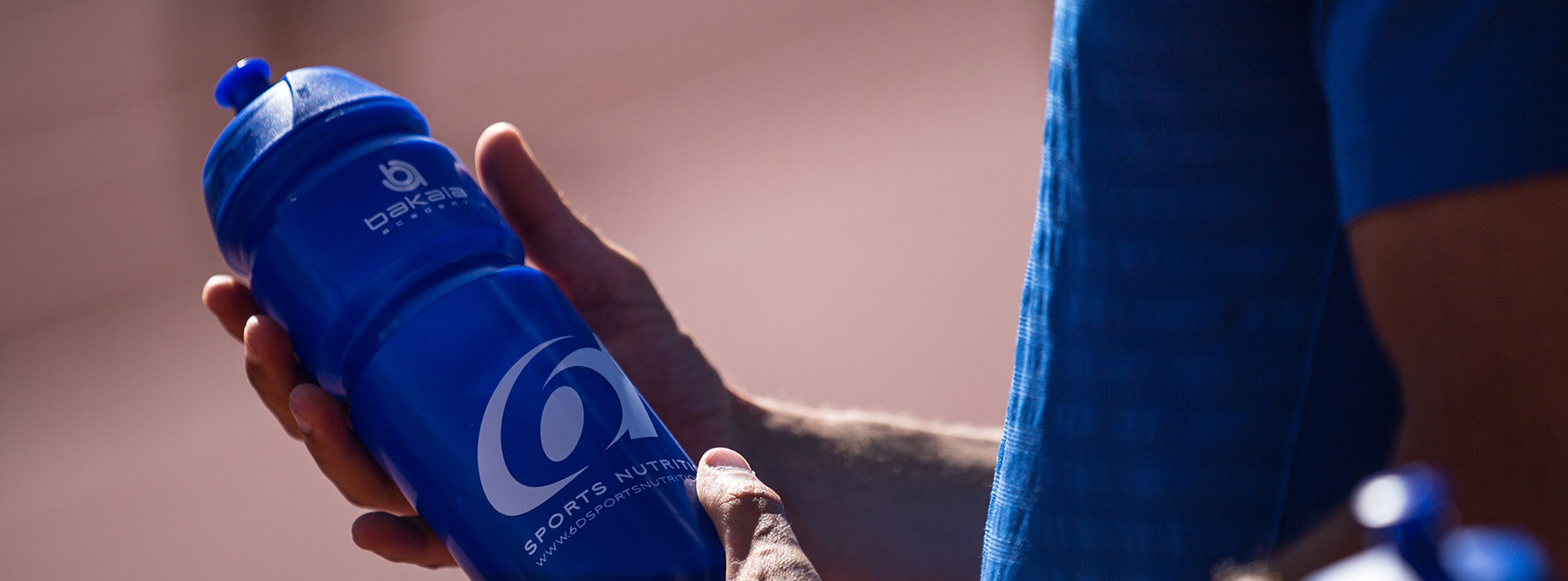Which sports drink is best for you?

‘Energy drink’, ‘sports drink’, ‘electrolyte drink’, or ‘isotonic thirst-quencher’… these are just some of the names in the massive profusion of sports drinks on the market today. The widely varying names sometimes make it difficult for an athlete to distinguish between these drinks. Nevertheless, there are important differences in composition and usage instructions. In this article, you will learn what matters most when buying a sports drink and which sports drinks are likely to be most suitable for you under specific conditions.
One of the most important properties to pay attention to when buying a sports drink is its osmolality. This is the concentration of dissolved particles (solutes) in the drink, such as carbohydrates and electrolytes. To a large extent, a solution’s osmolality determines how fast the liquid is transported from the digestive system via the small intestines and eventually absorbed in the body. An isotonic drink has the same concentration as that in blood plasma. A hypertonic drink has a higher number of solutes than in human blood plasma, while a hypotonic drink has less.
Hypotonic sports drink (<275 mmol/kg)
The concentration of solutes in a hypotonic drink is lower than in human blood plasma. This means that a hypotonic sports drink only contains a small amount of carbohydrates, which is usually less than 40 grams per litre. This guarantees that it quickly passes through the digestive system. The osmolality of blood plasma is higher, which means that the water is automatically ‘pulled’ from the intestines into the blood. This process is called ‘passive transport’. The best example of a drink with these properties is water.
It is possible to boost the speed with which water is absorbed by adding small amounts of carbohydrates or salts to the drink. Besides the ‘passive transport’ described above, ‘active transport’ also occurs in these circumstances. An Oral Rehydration Solution (ORS) is a perfect example of a hypotonic drink that boosts the absorption of water in the body. The salts absorbed in the body ensure that less urine is produced, which means that more water is retained in the body. This means that an ORS is the ideal drink when (re-)hydration is the most important objective. It is important to be careful, however, because drinking excessive amounts of ORS drinks will cause diarrhoea due to the accumulation of salt (sodium) in the intestines. Other hypotonic drinks are also suitable when rehydration is the most important objective and the absorption of energy is less important.
Hypotonic drinks are the preferred choice under the following conditions:
- Primarily in hot and humid conditions before, during, and after exercise.
- During training when you deliberately want to reduce your carbohydrate intake (such as fasted training).
- During training lasting an hour or less when you do not need to consume carbohydrates, but fluid intake is important.
- During the day to meet your daily fluid requirement.
Isotonic drinks are the preferred choice under the following conditions:
Isotonic sports drinks usually contain between 40 to a maximum of 80 grams of carbohydrates per litre. The biggest advantage of an isotonic sports drink is that it can supply a substantial amount of the energy required during intensive and/or prolonged exercise. Moreover, the isotonic properties of these drinks ensures that carbohydrates and electrolytes are easily absorbed in the blood and thus reduces the risk of stomach and intestinal problems. An isotonic sports drink is the best choice for an athlete looking for a drink containing water, electrolytes, and energy that can be easily absorbed in the form of carbohydrates.
Isotonic drinks are the preferred choice under the following conditions:
- During training lasting longer than one hour when it is necessary to consume the required amount of both carbohydrates and water (endurance sports, team sports, etc.).
- Before exercise when there is a risk of not consuming enough energy during the exercise.
- During short intensive bursts of exercise as a carbohydrate mouth rinse.
Hypertonic sports drink (> 300 mmol/kg)
Hypertonic drinks have considerably higher concentrations of solutes than in human blood plasma and usually contain more than 80 grams of carbohydrates per litre. The high concentration of carbohydrates is the reason these are often called ‘energy drinks’ or ‘energy sports drinks’. Most energy gels also fall under hypertonic sports drinks, although there are now also isotonic gels. Hypertonic liquids slow the emptying of the stomach, which especially delays the absorption of water. The osmolality of these drinks is higher than that in human blood, such that water must first be drawn from the blood into the intestines to dilute the solution in the intestines. This (temporarily) dehydrates the body and, in particular, this increases the risk of stomach and intestinal problems due to the increased amount of water in the intestines. Consequently, a hypertonic drink should not be consumed when hydration is a high priority. However, a hypertonic drink is the best choice to meet your need for carbohydrates when energy is needed really quickly, when the opportunity to consume energy is limited (such as in team sports), or when fluid intake is reduced due to cold weather conditions (e.g. cold spring classics). The fastest absorption of sugars in the body occurs when consuming hypertonic sports drinks with a very high concentration of sugars.
Hypertonic drinks are the preferred choice under the following conditions:
- As a carbo loader primarily before a long period of exercise.
- During exercise lasting longer than an hour when the need for water is low (e.g. cold weather conditions) or when there is very limited time to eat or drink (e.g. team sports).
- As a rapid supply of sugar each time an acute shortage of blood sugar is imminent, e.g. due to not consuming carbohydrates during prolonged exercise.
- During short intensive bursts of exercise as a carbohydrate mouth rinse.
In conclusion, it is extremely important to pick the right sports drink depending on the exercise conditions and the specific needs that arise during those conditions. This means making the right choice based on the properties described above.


